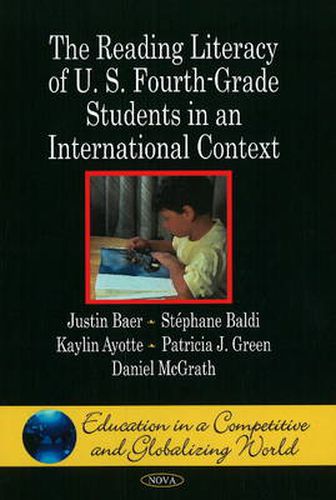Readings Newsletter
Become a Readings Member to make your shopping experience even easier.
Sign in or sign up for free!
You’re not far away from qualifying for FREE standard shipping within Australia
You’ve qualified for FREE standard shipping within Australia
The cart is loading…






The Progress in International Reading Literacy Study (PIRLS) is an assessment of the reading comprehension of students in their fourth year of schooling. In 2006, PIRLS was administered to a nationally representative sample of fourth-grade students in the United States, as well as to students in 44 other jurisdictions around the world. The PIRLS assessment measures student performance on a combined reading literacy scale and on a literary subscale and informational subscale. This book compares the performance of U.S. students with their peers around the world and also examines how the reading literacy of U.S. fourth-grade students has changed since the first administration of PIRLS in 2001. Results are presented by student background characteristics (sex and race/ethnicity) and by contextual factors that may be associated with reading proficiency (school characteristics, instructional practices and teacher preparation, and the home environment for reading).
$9.00 standard shipping within Australia
FREE standard shipping within Australia for orders over $100.00
Express & International shipping calculated at checkout
The Progress in International Reading Literacy Study (PIRLS) is an assessment of the reading comprehension of students in their fourth year of schooling. In 2006, PIRLS was administered to a nationally representative sample of fourth-grade students in the United States, as well as to students in 44 other jurisdictions around the world. The PIRLS assessment measures student performance on a combined reading literacy scale and on a literary subscale and informational subscale. This book compares the performance of U.S. students with their peers around the world and also examines how the reading literacy of U.S. fourth-grade students has changed since the first administration of PIRLS in 2001. Results are presented by student background characteristics (sex and race/ethnicity) and by contextual factors that may be associated with reading proficiency (school characteristics, instructional practices and teacher preparation, and the home environment for reading).